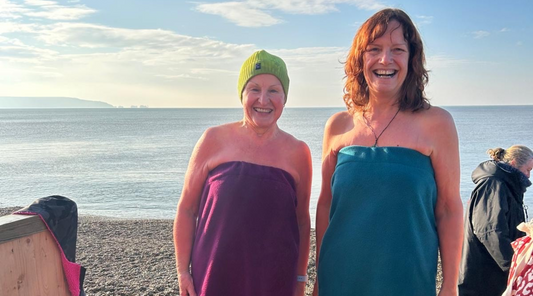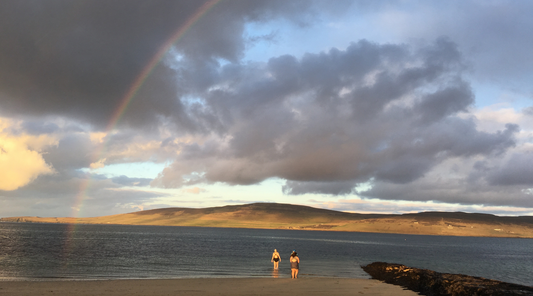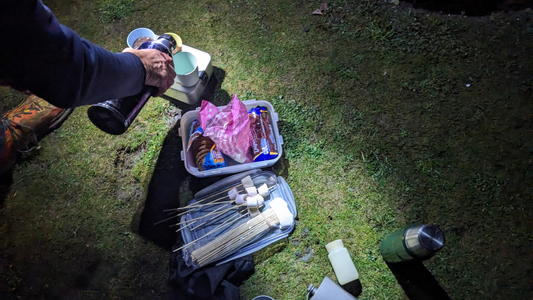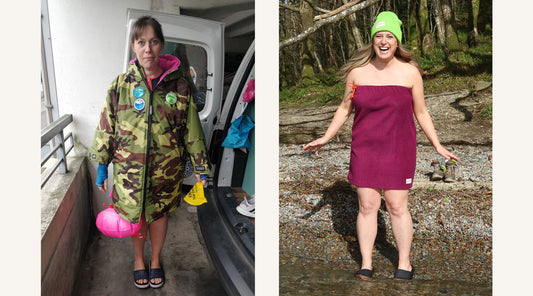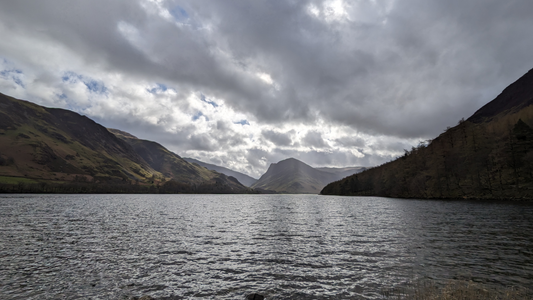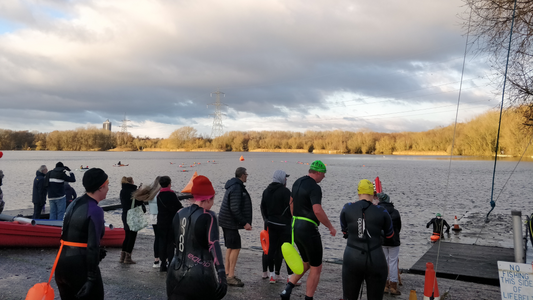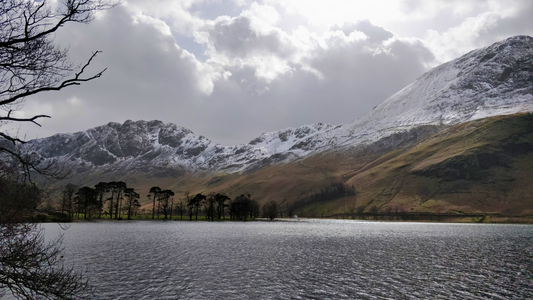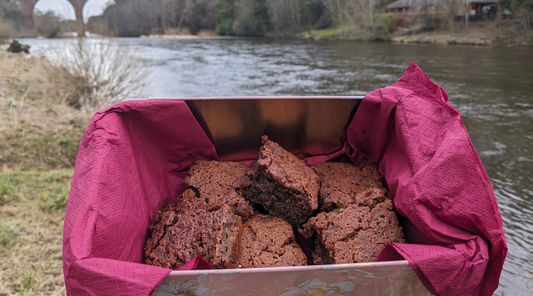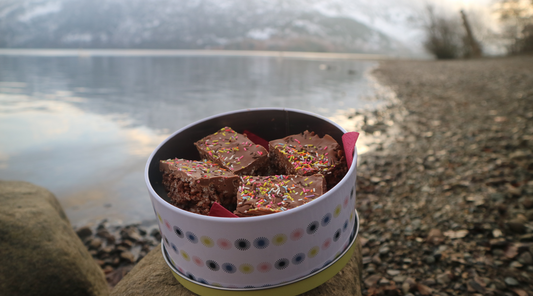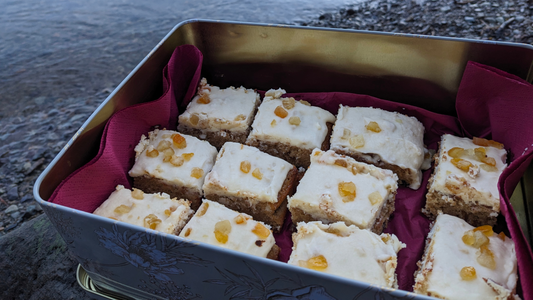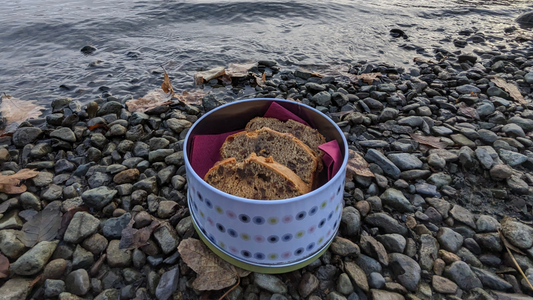Outdoor swimming can be an exhilarating cold water experience. In the wild, you can feel more connected to yourself than in day-to-day life. But it comes with some basic safety precautions that every swimmer, seasoned or new should practice. We’ve put together our 11 top cold water safety swimming tips so you can have a safe and enjoyable experience.
- Practice at home
- Research your location
- Check the weather
- Take the right kit
- Swim with others
- Know your limits
- Be visible
- Don’t forget to breathe
- Layer up
- Take a hot drink & a snack
- Leave only footprints
1. Practice at home before you swim in the wild
Stepping out into the wilds of nature can be daunting but we congratulate you for wanting to push your boundaries and join us wild swimming. Our first tip for you is to start your acclimatisation to cold water even before you step anywhere near the shore. This starts with your shower routine. We all love our comfortable hot showers but start to challenge yourself. At the end of your shower, turn the dial to cold and use these 30 seconds of cold water to start to practice controlling your breath so that when you get to the shore you are already mentally prepared to deal with the cold water experience.
2. Research your swimming location
Knowing where to swim is probably the first consideration that you should think about. How are you going to get there? Is there a suitable route that you can take by car, bus or foot? Is there a phone signal?
This can be particularly important in the case of an emergency. Will people be able to get to you?
Other things to take into consideration at your swim spot are entry and exit points. Your entry and exit points can contribute to your enjoyment. Is it sheltered? Changing with the full force of the wind coming at you can be difficult and can exacerbate the on set of after drop.
If you choose to swim at night make sure you leave a light beacon where your kit is. Swimming in the dark is exciting for the senses but you can get disorientated and a beacon on shore can be a helpful light to swim to.

3. Check the weather
Look at the weather. We recommend using windy.com. It can show you standard weather information as well as wind direction and speeds. Swimming in choppy waters isn’t that pleasant. But consider changing in it! Wind chill can quicken the on set of after-drop symptoms but with a Changing Tube in your kit bag, at least you wouldn’t be fighting to keep it up like you would with a towel.
If you are swimming in the sea, look at the tides. Do you know how to identify a rip tide, or know how to get out of one? The RNLI has a great little guide to riptides.
4. Take the correct kit
Taking the correct equipment will aid you in having a comfortable and safe swim. If you are unsure of what to take, why not take a look at our Warmcor Guide to Open Water Swimming.

5. Swim with others
Swim with others. It is simply safer. Even a very experienced open-water swimmer can get into trouble sometimes. It can be tempting to go in by yourself. If you do, please stick close to the shore and swim along it, not away from it. Use your common sense.
If you can afford it, invest in a group session with a qualified open-water lifeguard. They will take care of all the safety precautions and will be able to instruct you in good open-water practice. Suzanna Cruickshank is an experienced and qualified swim guide in Cumbria. She says that while swimming…
“...you want to know that the people that you're with are going to look after you in that situation.
And when you talk about things going wrong, it could be as simple as:
- A little bit of mild hypothermia when you finish your swim
- Knowing how long you should be in the water for
- Having the right equipment afterwards
- Rewarming process
- Protecting the environment you're swimming in
So if you're swimming with a professional, organised group, those will be taken care of for you. You just need to turn up with your bag and swim.”
6. Know your limits
Welcome to the world of open-water swimming. It’s brilliant to have you on board, but please don’t feel like you need to stay in the water for the same length of time as more seasoned swimmers. Acclimatisation is really important for your safety (see tip 1). Stretching yourself too much during your swim can have knock-on negative effects.
"Cold water swimming can improve blood pressure and fat levels in the blood when practised regularly by those in good general health. However, if you have a heart condition, there are risks you should consider and discuss with your doctor or nurse specialist before starting swimming." - British Heart Foundation
Another thing that you should appreciate is just knowing that each swim is different. Last week you may have been in the water longer, but this week you have felt a tad run down so you don’t stay in the water as long as you did previously. That’s okay. Listen to your body. It will tell you when it has had enough.

7. Be visible
Let others know where you are. This applies to when leaving for a swim and also while you are in the water. Using a tow float is advisable in most, if not all circumstances. This is a visual cue to those around you that you are there. If you do get into trouble, your rescuers will be able to get to you quickly. Whilst not to be used as a buoyancy aid, they can be good for a little rest mid-swim.
8. Don’t forget to breathe
During one of Jenny’s first swim experiences with Cumbrian swim guide Suzanna Cruickshank, Suzanna gave a piece of advice that we should use all of the time. When entering the water, do so slowly and be conscious of your breathing. Keep it steady. This is important as your body is flooded with flight or fight adrenaline and your brain will be screaming “What are you doing?!” If not controlled this can lead to hyperventilation which can lead to non-desirable circumstances. Move past that rush by focusing on steady breathing. Splash water about your body to start the acclimatisation and then when you are mid-way in, take a deep breath in and on the exhale, gently immerse yourself in the water. Don’t forget to keep the steady breathing going and then after the first minute or so your body will be on the road to acclimatisation.
9. Layer Up!
Yes, that does mean taking layers and a hat to change into during summer, because you can still get hypothermia in summer. Bigger bodies of water will be colder the further you get out and remember that your body will continue to get colder for a good 30/40 minutes after you get out of the water. The Changing Tube was created to help start the warming process going from the moment you get the excess water and swimsuit off. The fleece material starts the insulating process and helps you to get dressed quicker because you can see what you are doing and aren’t fighting on with armholes or making sure your towel stays up, preserving your modesty. In Winter we tend to keep the Changing Tube on for a long time post swim. Until we are nice and toasty inside and out. Other important layers are dry hats and jumpers, along with your favourite warm coat.

10. Take a hot drink and a snack
The post swim snack is a great way to warm up your core and soul.
Activating your insides with a warm drink and sugary treat will help you to get warm from the inside out, while your Changing Tube sorts the warm process from the outside, in.
The hot drink and cake is a classic part of the open water swim experience. It is where you can sit back and take stock of what you have just done, marvel at the scenery around you and open up with those who you have swam with. Sharing cake and stories can lead to a lovely community spirit which is good for your mental health.
We love this part of the wild swimming ritual so much that we've shared some of our favourite post-swim recipes and snacks in our Wild Swimming Journal.
11. Leave only footprints
This is more about the safety of the environment around you and making sure it is the same for those who come after you to enjoy the same experience that you have. Seeing litter in swim locations just leaves a bitter taste in anyone's mouth. It shows utter disrespect. You didn’t drop it but could you pick it up?
The other element is being aware of the biodiversity around you. Is that river entry point a hot spot for breeding fish at the time of your swim?
Currently, in the Lake District, we are doing battle with New Zealand Pigmyweed. It was first spotted in Derwent Water back in the 1990s but unfortunately has now spread to other lakes within the lake district.
Originally New Zealand Pigmyweed first came to the UK as an ornamental plant for domestic ponds but after some thoughtless actions (suspected) it entered one of the Lake District waters where, without predators, it spreads and thrives to the detriment of native species.
It's imperative that you don’t take this invasive species to any of the clean lakes. This can be done by cleaning everything that goes into the Lakes to make sure you have no hitchhikers. If you have any hitchhikers on your suit, water shoes, tow float, dog, anything, make sure you clean, check and then dry off in the sun. Let's keep our environment clean for the next person.
Don't be afraid to ask questions
These are just eleven tips for you to consider as you dip your toes into a new swimming experience. The open-water swimming community is a friendly bunch, so if you are unsure just ask the question. Then you can become a champion for swim safety and pass that knowledge on to the next newcomer to cold water swimming.



